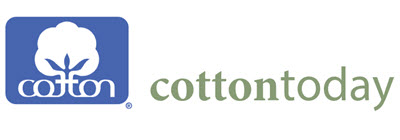Technical Advisory Committee of the Whitefly Q Biotype Task Force
Bemisia whiteflies comprise a large and dynamic complex of pests that infest many crops in the tropics, subtropics, and warm temperate regions. In the late 1980’s a biotype of Bemisia tabaci biotype B = B. argentifolii invaded the United States and replaced the native biotype, thereafter known as biotype A. Biotype B caused serious economic damage to several crops including ornamentals, vegetables – especially brassicas, curburbits, and tomatoes, and cotton. An especially troublesome characteristic of biotype B was its resistance to many commonly used insecticides.
In the late 1990’s another biotype, designated Q, became difficult to control and prevalent in the Mediterranean basin, particularly in enclosed agricultural production facilities, but also in field crops in certain areas, including on cotton in Israel. In December 2004, specimens of the Q biotype were identified on poinsettia at a retail store in Tucson, Arizona. The detection resulted in the United States Department of Agriculture – Animal Plant Health Inspection Service – Plant Protection Quarantine (USDA APHIS-PPQ) convening a New Pest Advisory Group (NPAG).
The NPAG verified that the B and Q biotypes could not be distinguished morphologically, but could be differentiated only using biochemical or molecular diagnostics. Such tests are not rapid and require specialized equipment and expertise. The stringent testing requirements, combined with the wide host range of the pest, renders detection at points of importation very difficult. Experience with the B biotype has shown that this species of whitefly is difficult, if not impossible, to contain or eradicate. Accordingly, APHIS-PPQ applied the “non-reportable/non-actionable” policy to the Q, as previously had been applied to the B biotype.
The Q-biotype has enhanced abilities to resist the effects of insecticides and poses challenges beyond those encountered with the B biotype. Therefore, subsequent to the discovery of the Q biotype, leaders of the potentially affected commodities met with members of the scientific community and federal and state regulatory officials in April 2005 in Phoenix, Arizona, to explore options for dealing with the Q biotype. As a result of the meeting, industry leaders requested that APHIS-PPQ coordinate the formation of an ad hoc task force to address issues pertaining to this pest.
The Responsibilities of the National Whitefly Q biotype Task Force are: 1. Assess and validate information concerning the Q biotype of Bemisia tabaci in the United States and elsewhere. 2. Develop and recommend action plans to prevent or limit the spread, and mitigate the potential damage to U.S. agriculture that may result from the Q biotype. 3. Develop and recommend management plans to minimize economic losses to U.S. agriculture that could potentially result from the Q biotype.
Dr. R. L. Nichols of Cotton Incorporated serves on the Technical Advisory Committee (QTAC) of the Task Force. Among other activities, Cotton Incorporated sponsored a meeting of QTAC on April 3, 2006 in conjunction with the National IPM Conference in St. Louis, MO, April 4-6. The meeting had two parts, a Symposium of international experts, and a planning meeting. Presentations made at the Symposium are reproduced here with permission of the authors.
The Technical Advisory committee has a website, www.mrec.ifas.ufl.edu/lso/bemisia/bemisia.htm. Dr. Osama El-Lissy of USDA-APHIS PPQ is Chair of the Task Force. Drs. Tim Dennehy and Lance Osborne of the Universities of Arizona and Florida, respectively, are Co-Chairs of the Technical Advisory Committee. Dr. Osborne maintains the QTAC website.









